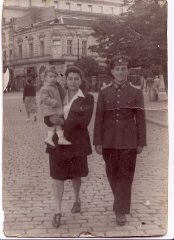You searched for: ������������������������������what���aptao168���plus
<< Previous | Displaying results 126-150 of 674 for "������������������������������what���aptao168���plus" | Next >>
-
Fire Oaths
Article“Fire Oaths” were statements that declared why the works of certain authors were thrown into the flames during the 1933 burning of books under the Nazi regime.

-
Jewish Uprisings in Camps
ArticleLearn more about Jewish prisoners and the various uprisings and armed resistance movements in killing centers and other Nazi camps.

-
Translation in the Courtroom
ArticleThe Nuremberg trials were an early experiment in simultaneous translation. Learn about the principles and technology involved in translating the trial proceedings.

-
Mira Shelub
ArticleRead the Jewish Partisan Educational Foundation's short biography of Mira Shelub.
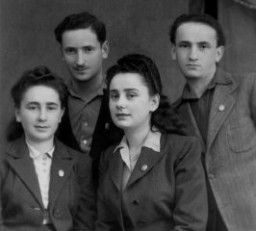
-
Erich Kästner
ArticleErich Kästner was a popular political satirist and left-liberal author whose works were burned under the Nazi regime in 1933. Learn more.
-
Kurt Tucholsky
ArticleKurt Tucholsky was a German satirist who criticized the Nazis during their rise to power. In 1933, his works were burned under the Nazi regime. Learn more.
-
Max Brod
ArticleMax Brod was a Jewish author most widely known as the biographer and editor of Franz Kafka. His works were burned in the Nazi book burnings of 1933. Learn more.
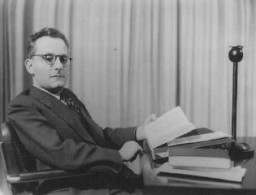
-
Page from the Stroop Report
PhotoA page from SS officer Juergen Stroop's report on the Warsaw ghetto uprising. He wrote: "This is what the former Jewish residential quarter looks like after its destruction." Warsaw, Poland, April-May, 1943.

-
Refugees leave Warsaw
PhotoCivilians flee Warsaw following the German invasion of Poland. Hundreds of thousands of both Jewish refugees and non-Jewish refugees fled the advancing German army into eastern Poland, hoping that the Polish army would halt the German advance in the west. Many of the refugees fled without a specific destination in mind. They traveled on foot or by any available transport—cars, bicycles, carts, or trucks—clogging roads to the east. Most took only what they could carry.
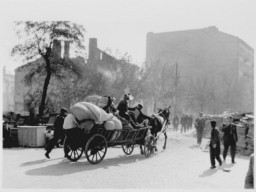
-
Deadly Medicine
SeriesFrom 1933 to 1945, Nazi Germany carried out a campaign to "cleanse" German society of individuals viewed as biological threats to the nation's "health." Learn more
-
Soviet Prisoners of War
SeriesThe Nazis perpetrated mass murder against groups considered to be racial, civilizational, or ideological enemies. This included Soviet prisoners of war. Learn more
-
Displaced Persons Camps
SeriesLearn more about what life was like for Holocaust survivors living in DP camps after WWII. This series focuses on DP camps in the US zone of Allied-occupied Germany.
-
Burial of victims of Wöbbelin
PhotoGerman civilians from Ludwigslust file past the corpses and graves of 200 prisoners from the nearby concentration camp of Wöbbelin. The US Army ordered the townspeople to bury the corpses on the palace grounds of the Archduke of Mecklenburg. Germany, May 7, 1945. Outraged by what they found upon entering the camp, the ranking Allied commanders in the area forced civilians from the nearby towns of Schwerin, Hagenow, and Ludwigslust to view the concentration camp and then bury the bodies of prisoners…
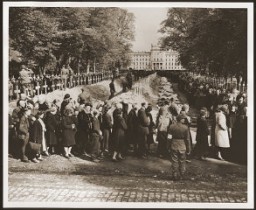
-
The Bergen-Belsen concentration camp
PhotoA view of the Bergen-Belsen concentration camp after the liberation of the camp. Bergen-Belsen, after April 15, 1945. As it drove into Germany, the British 11th Armoured Division occupied the Bergen-Belsen concentration camp on April 15, 1945. When the 11th Armoured Division entered the camp, its soldiers were totally unprepared for what they found. Inside were more than 60,000 emaciated and ill prisoners in desperate need of medical attention. More than 13,000 corpses in various stages of…

-
Berlin environs, 1942
MapBerlin was a center of Jewish life in Germany and—as the capital of the Reich—also the center for the planning of the "Final Solution," the decision to kill the Jews of Europe. The Wannsee Conference, named for the resort district in southwestern Berlin where it was held, took place in January 1942. High-ranking officials from the Nazi party, the SS, and the German state met to coordinate and finalize what they referred to as the "final solution to the Jewish problem." At the conference, these…

-
Siege (1940)
ArticleJulien Bryan’s ten-minute film Siege, first non-Nazi produced footage of the start of WWII, records horror and chaos in Warsaw following the German invasion.

-
German Administration of Poland
ArticleGermany invaded Poland on September 1, 1939. Learn about the administrative units that Germany established after annexing and occupying parts of prewar Poland.
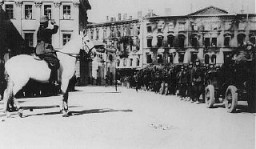
-
Law and Justice in the Third Reich
ArticleAfter the Nazi rise to power in 1933, the German system of justice underwent "coordination" (alignment with Nazi goals). Learn more about law and justice in the Third Reich.

-
Subsequent Nuremberg Proceedings
ArticleAmerican military tribunals presided over 12 Subsequent Nuremberg Proceedings against leading German industrialists, military figures, SS perpetrators, and others.
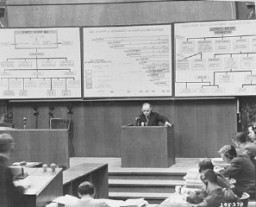
-
Bernard Musmand
ArticleRead the Jewish Partisan Educational Foundation's short biography of Bernard Musmand.

-
Norman Salsitz
ArticleRead the Jewish Partisan Educational Foundation's short biography of Norman Salsitz.
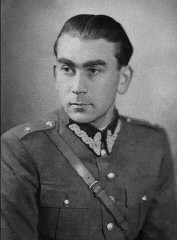
-
Ernst Gläser
ArticleErnst Gläser wrote the antiwar novel "Jahrgang 1902." His works, considered leftist and anti-fascist, were burned in Nazi Germany in 1933. Learn more.
-
Frank Blaichman (Jewish Partisan Educational Foundation biography)
ArticleRead the Jewish Partisan Educational Foundation's short biography of Frank Blaichman.
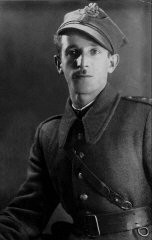
-
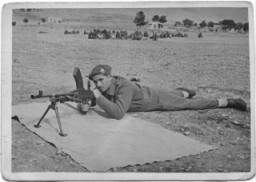
-
Samuel Levi
ArticleRead the Jewish Partisan Educational Foundation's short biography of Samuel Levi.
